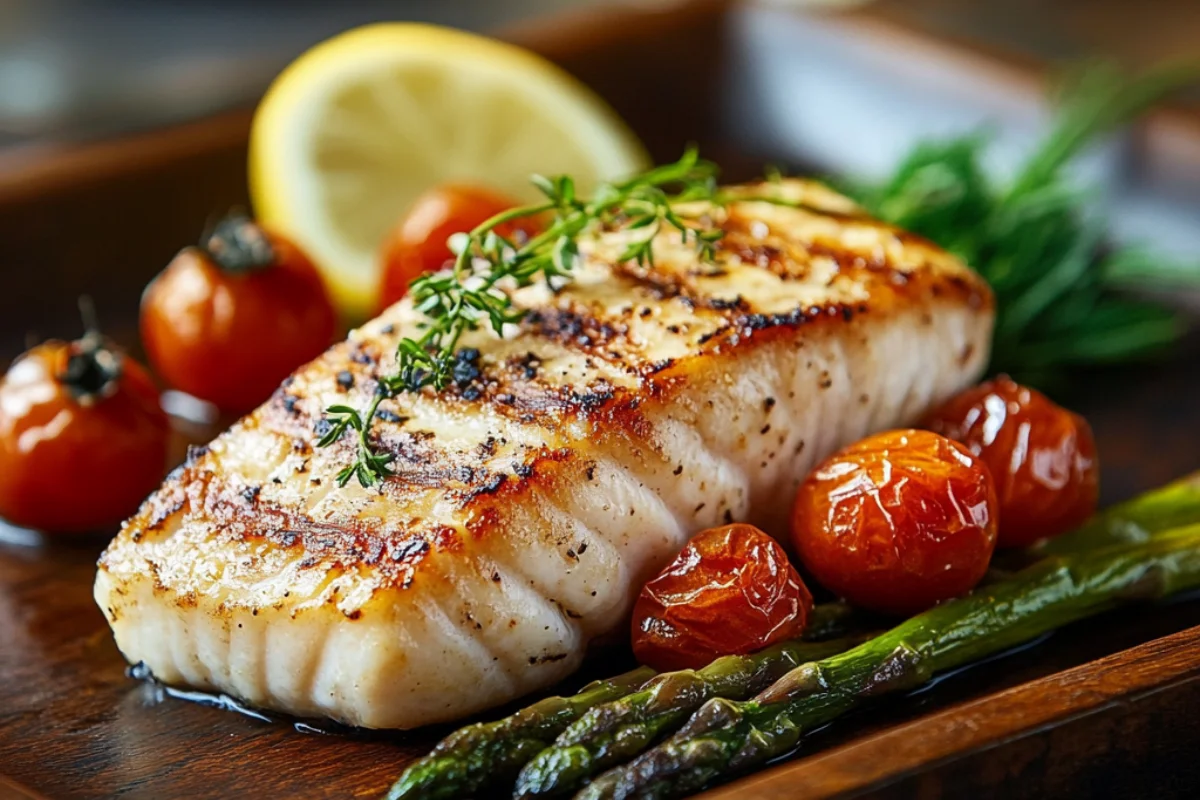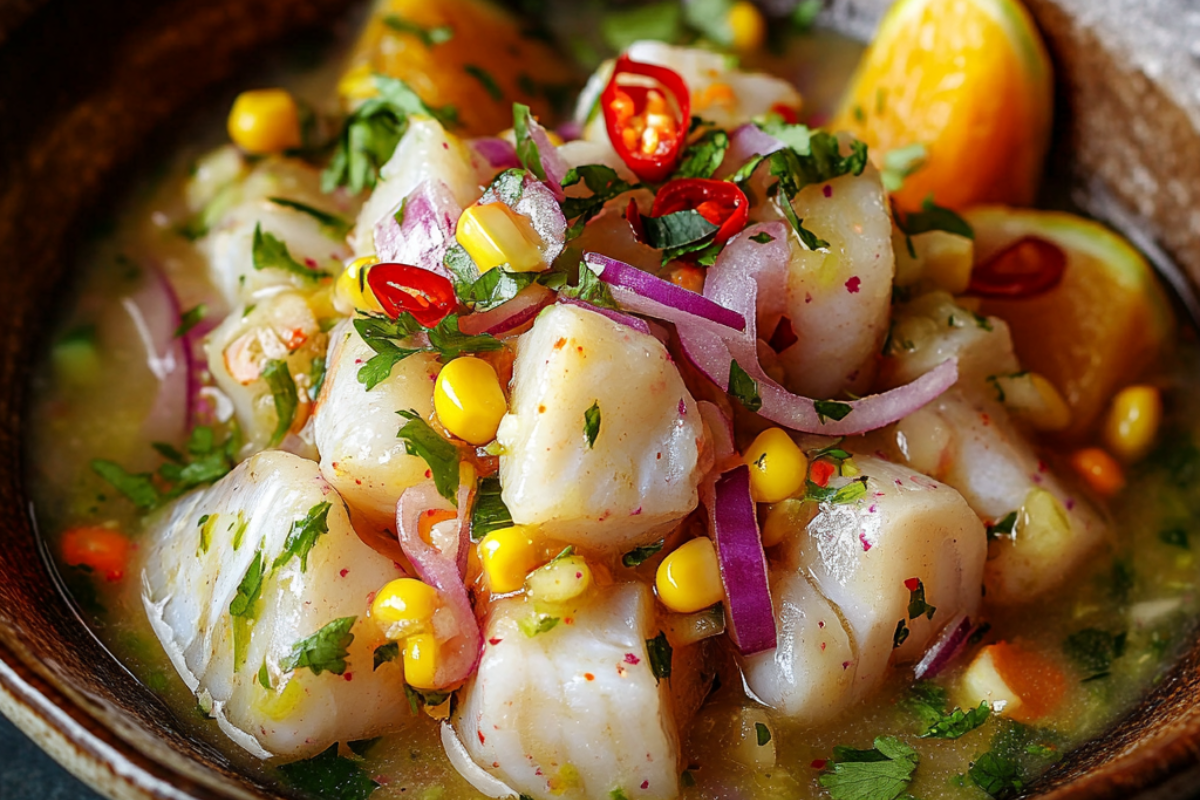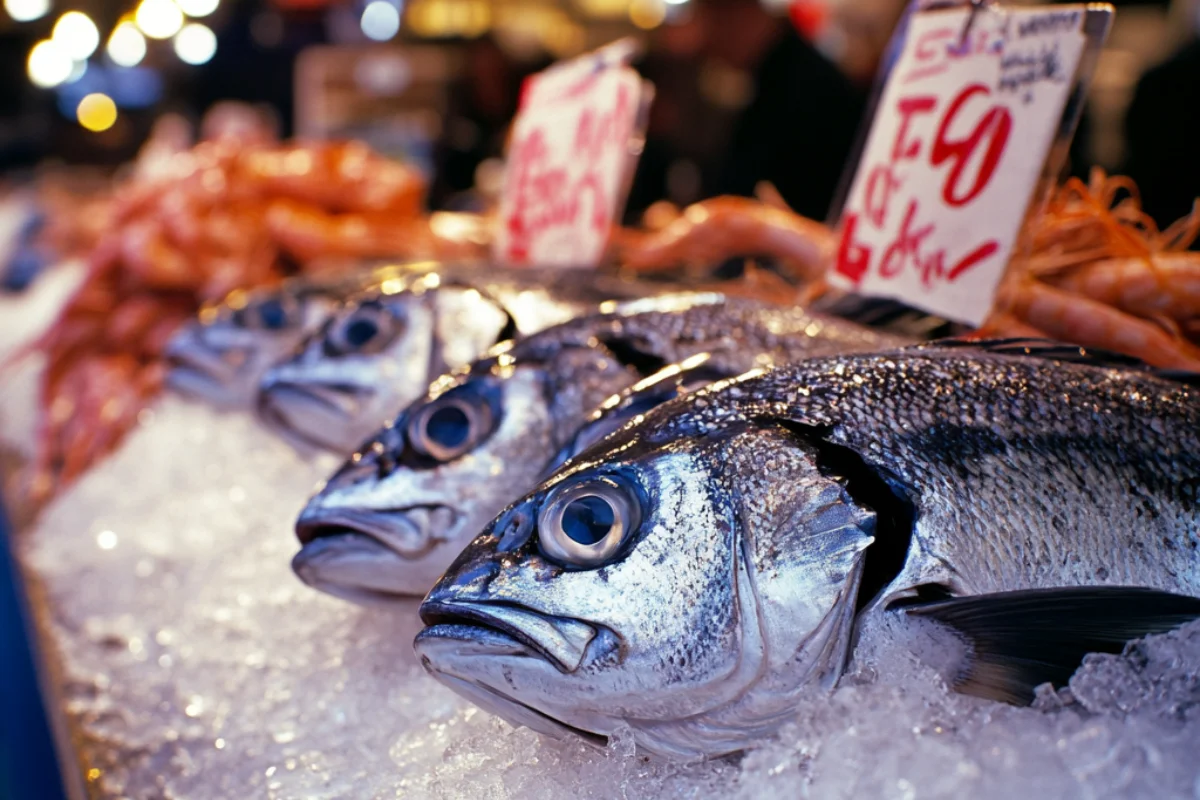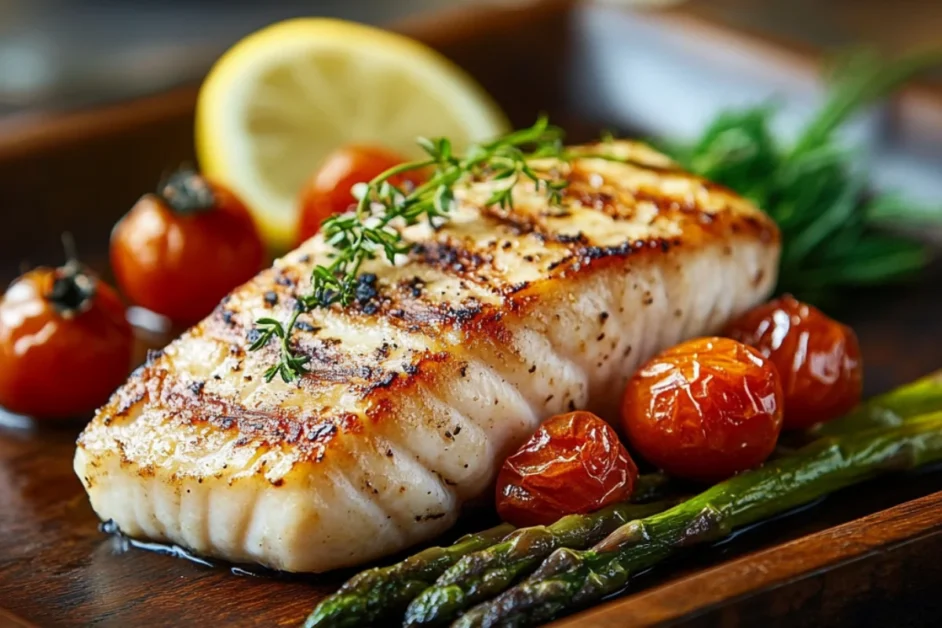1. Introduction to Corvina Fish
Corvina is a delicious and versatile fish that has been gaining popularity worldwide. It belongs to the Sciaenidae family, which includes drum fish and croakers. This species thrives in warm coastal waters across the Pacific, Atlantic, and Indian Oceans. Commonly found in regions like South America, Central America, and parts of Asia, Corvina is well-known for its mild flavor and firm texture, making it a top choice for various cuisines.
There are multiple species of Corvina, but some of the most well-known include:
- White Corvina (Cilus gilberti) – Found mainly in Peru, Ecuador, and Chile, this species is often used in ceviche and grilled dishes.
- Spotted Corvina (Cynoscion nebulosus) – Found in North and Central America, this species is popular in Mexican and Gulf Coast cuisine.
- Yellow Corvina (Larimichthys polyactis) – Common in East Asian waters, this species is a staple in Korean and Chinese dishes.
With its availability across different continents and versatile culinary applications, Corvina is a fish worth exploring in depth.
2. What Makes a Fish Good for Eating?
Not all fish are created equal when it comes to taste, texture, and nutritional value. Here are the key factors that determine whether a fish is good for eating:
1. Taste & Flavor Profile
- A mild and slightly sweet flavor is preferred by many. Fish with an overly “fishy” taste can be off-putting to some.
- Corvina has a clean, delicate taste, often compared to sea bass or snapper.
2. Texture
- The best-eating fish usually have a firm yet flaky texture, allowing them to hold up well in different cooking methods.
- Corvina has a medium-firm texture, making it great for grilling, frying, and baking.
3. Nutritional Benefits
- High protein content is essential for muscle growth and repair.
- Rich in Omega-3 fatty acids, which support heart and brain health.
- Low in saturated fats, making it a healthy choice.
4. Sustainability
- A good eating fish should be sourced responsibly, ensuring that populations remain stable and that fishing practices do not harm the environment.
- Corvina’s sustainability varies depending on whether it is wild-caught or farmed.
3. Corvina’s Popularity in Global Cuisine
Corvina is highly regarded in various international cuisines, particularly in Latin America, Asia, and coastal regions of the U.S. Some of the most popular dishes featuring Corvina include:
- Peruvian Ceviche – One of the most famous dishes in Peru, where Corvina is marinated in lime juice, onions, and chili peppers.
- Ecuadorian Corvina a la Plancha – Grilled Corvina served with rice, plantains, and salad.
- Mexican Corvina Tacos – Often battered and fried or grilled, served with fresh salsa and lime.
- Korean Guljeon (Pan-fried Corvina) – Lightly battered and fried, served with soy-based dipping sauce.
- Italian-style Corvina al Forno – Oven-baked with herbs, olive oil, and garlic.
The mild, versatile flavor of Corvina makes it a popular choice in both simple home-cooked meals and high-end restaurants.
4. Taste and Texture of Corvina
Corvina is known for its mild, slightly sweet taste that is often compared to:
- Sea Bass – Similar in flavor and texture, but Corvina is usually more affordable.
- Snapper – Corvina has a slightly firmer texture than red snapper but shares a similar mildness.
- Halibut – Corvina is less dense than halibut but still holds its shape well in various cooking methods.
When cooked, Corvina has a moist and flaky texture, making it perfect for dishes that require a firm fish that won’t fall apart easily.
5. Nutritional Benefits of Corvina
Eating Corvina provides several health benefits, including:
- High Protein Content – Around 20-22 grams of protein per 100 grams, making it great for muscle growth and recovery.
- Rich in Omega-3 Fatty Acids – Supports heart health, reduces inflammation, and boosts brain function.
- Low in Saturated Fat – A great choice for those looking to reduce unhealthy fats in their diet.
- Packed with Essential Vitamins and Minerals – Such as vitamin B12, selenium, phosphorus, and potassium, all of which contribute to overall health and well-being.
With its nutrient-rich profile, Corvina is a great option for those looking to eat healthy, lean protein.
6. Health Considerations When Eating Corvina
While Corvina is generally considered safe and healthy, there are a few health considerations:
- Mercury Levels – Like many larger fish, Corvina can contain moderate levels of mercury. It is recommended to consume it in moderation, especially for pregnant women and young children.
- Allergies – Those with fish allergies should avoid Corvina.
- Dietary Restrictions – People on a low-sodium diet should be mindful of added seasonings when preparing Corvina.
When eaten in moderation as part of a balanced diet, Corvina can be a safe and nutritious choice.
7. Culinary Versatility of Corvina
One of Corvina’s greatest strengths is its culinary flexibility. It can be prepared in numerous ways, including:
- Grilled – Brushed with olive oil, lemon, and herbs for a smoky, flavorful dish.
- Fried – Perfect for making crispy fish tacos or fish sandwiches.
- Baked – Combined with butter, garlic, and herbs for a rich and tender dish.
- Ceviche – A refreshing, low-calorie dish using lime juice to “cook” the fish.
- Pan-seared – Creates a crispy crust while keeping the inside moist and flaky.
Because of its firm texture and mild flavor, Corvina works well in a variety of global cuisines.
8. Comparing Corvina with Other Popular Fish
Corvina is often compared to other commonly eaten fish:
- Cod – Corvina is firmer and slightly sweeter than cod.
- Tilapia – Corvina has more flavor and a better texture than tilapia, which is often considered too mild.
- Halibut – Halibut is denser and more expensive, while Corvina offers a more budget-friendly alternative.
For those who enjoy sea bass, snapper, or grouper, Corvina is an excellent substitute.
9. Sustainability and Fishing Practices
- Wild-Caught vs. Farmed – While wild-caught Corvina is more sustainable, some farmed varieties are responsibly raised.
- Overfishing Concerns – Certain Corvina species face population decline due to high demand. Always look for certified sustainable options.
- Eco-Friendly Choices – Opting for responsibly sourced Corvina supports sustainable fishing practices.
10. Final Verdict: Is Corvina a Good Eating Fish?
Pros:
Mild, delicious taste
Firm, flaky texture
High nutritional value
Versatile for cooking
Cons:
Moderate mercury levels
Not always sustainably sourced
Overall, Corvina is a great choice for those looking for a healthy, flavorful, and versatile fish.
Cooking & Recipes: Mastering Corvina in Your Kitchen
11. Best Ways to Prepare Corvina

Corvina is a versatile fish that can be cooked using several methods, each enhancing its mild and slightly sweet flavor. Whether you prefer a crispy sear, a smoky grill, or a tender baked dish, Corvina adapts well to various cooking styles.
1. Grilling
Grilling Corvina brings out its natural flavors while adding a smoky char. The firm texture of Corvina helps it hold up well on the grill.
How to grill Corvina:
- Preheat the grill to medium-high heat (375-400°F).
- Brush the fish with olive oil, lemon juice, salt, and pepper.
- Cook for 4-5 minutes per side, flipping only once.
- Serve with a fresh herb sauce or a squeeze of lime.
2. Pan-Searing
Pan-searing locks in the juiciness of Corvina while creating a golden, crispy crust.
Steps to pan-sear Corvina:
- Heat a pan with butter or olive oil over medium-high heat.
- Season the fish with garlic, paprika, and sea salt.
- Sear for 3-4 minutes per side, until golden brown.
- Serve with a light butter sauce or fresh salsa.
3. Steaming
Steaming is a healthy cooking method that preserves the delicate texture and nutrients of Corvina.
How to steam Corvina:
- Place the fish in a steamer basket over boiling water.
- Season with ginger, soy sauce, and scallions.
- Cover and steam for 8-10 minutes, or until flaky.
- Serve with a side of rice or stir-fried vegetables.
4. Baking
Baking Corvina is a foolproof way to cook it evenly without drying it out.
instructions:
- Preheat the oven to 375°F (190°C).
- Place Corvina in a baking dish with olive oil, garlic, and fresh herbs.
- Bake for 12-15 minutes, depending on thickness.
- Finish with a squeeze of lemon juice or white wine sauce.
12. Traditional Corvina Dishes from Around the World

Corvina is widely used in global cuisines, each country bringing its own flair to this fish.
Latin America: Corvina Ceviche
One of the most famous ways to enjoy Corvina is Peruvian-style ceviche.
Ingredients:
- Fresh Corvina, cut into cubes
- Fresh lime juice
- Red onion, thinly sliced
- Chili peppers (aji amarillo or jalapeño)
- Cilantro, salt, and black pepper
Method:
- Marinate Corvina in lime juice for 15-20 minutes.
- Add onions, chili, and seasonings.
- Serve with sweet potatoes and corn.
Mediterranean: Corvina al Forno
An Italian classic, oven-baked Corvina with herbs and olive oil.
Ingredients:
- Corvina fillet
- Garlic, rosemary, oregano
- Olive oil and lemon
- Cherry tomatoes
Method:
- Marinate the fish with seasonings and bake at 375°F for 15 minutes.
- Serve with a side of roasted vegetables or a fresh salad.
Asian: Korean Guljeon (Pan-Fried Corvina)
A simple Korean dish where Corvina is lightly battered and pan-fried.
Ingredients:
- Corvina fillet
- Flour and egg for coating
- Soy sauce, sesame oil, and garlic
Method:
- Coat Corvina in flour and egg, then pan-fry until golden.
- Serve with soy dipping sauce.
13. Easy Corvina Recipes for Home Cooks
Here are three quick and easy Corvina recipes anyone can make at home.
1. Garlic Butter Corvina
- Sear Corvina in butter and garlic for 5 minutes per side.
- Add lemon juice and parsley.
- Serve with steamed vegetables.
2. Spicy Corvina Tacos
- Season Corvina with chili powder, cumin, and lime.
- Pan-fry for 5 minutes per side.
- Serve in warm tortillas with slaw and salsa.
3. Corvina in Coconut Curry
- Simmer Corvina in a coconut milk sauce with curry paste.
- Add bell peppers and onions.
- Serve with basmati rice.
14. Pairing Corvina with Side Dishes
Corvina pairs well with a variety of sides and sauces.
Best Side Dishes for Corvina
- Vegetables: Grilled asparagus, sautéed spinach, roasted carrots
- Grains: Jasmine rice, quinoa, couscous
- Sauces: Lemon butter, mango salsa, chimichurri
Best Wine Pairings
- White Wine: Sauvignon Blanc, Pinot Grigio
- Light Reds: Pinot Noir for grilled Corvina
15. Common Mistakes When Cooking Corvina
Avoid these common cooking mistakes:
Overcooking – Leads to dry and rubbery fish. Cook until just flaky.
Underseasoning – Corvina has a mild taste, so enhance it with herbs and spices.
Using high heat for too long – Best cooked on medium heat for better texture.
Storing improperly – Always refrigerate or freeze properly to maintain freshness.
16. How to Buy Fresh and High-Quality Corvina
When selecting Corvina at the market:
Look for firm flesh that bounces back when pressed.
Check for clear, bright eyes (not cloudy).
Fresh fish should have a mild ocean scent (not strong or sour).
Avoid fish with discoloration or mushy texture.
17. Storing and Preserving Corvina for Freshness
To keep Corvina fresh:
Store in the coldest part of the fridge (use within 2 days).
Freeze fillets in airtight bags for up to 3 months.
Thaw slowly in the fridge, not at room temperature.
18. Is Corvina a Good Choice for Sushi?
Corvina can be used in sushi, but it must be fresh and sushi-grade.
Buy from trusted fish markets.
Freeze at -4°F (-20°C) for at least 7 days to kill parasites.
Pair with sushi rice, avocado, and ponzu sauce for a great dish.
19. Cooking Corvina for Special Diets
Keto/Paleo: Corvina with butter sauce or coconut curry.
Gluten-Free: Use rice flour instead of regular flour for frying.
Low-Carb: Pair with steamed greens and avocado salad.
20. Using Corvina in Soups and Stews
Corvina’s firm texture makes it ideal for soups and stews.
Best Corvina Soups:
Brazilian Moqueca – Cooked in coconut milk with peppers.
Spanish Fish Stew – Simmered with tomatoes and saffron.
Asian Fish Soup – Light broth with ginger and soy.
Final Thoughts on Cooking Corvina
Corvina is one of the best fish for home cooking, thanks to its mild flavor, firm texture, and versatility. Whether you grill, bake, or fry it, Corvina delivers delicious results.
Consumer Insights & Final Thoughts on Corvina
21. Where to Buy Corvina?

Finding fresh Corvina depends on your location and access to seafood markets. Here are the best places to buy Corvina:
1. Local Fish Markets & Seafood Stores
- The best source for fresh, wild-caught Corvina.
- Look for markets near coastal areas where Corvina is commonly found.
- Ask for sustainably sourced options if available.
2. Supermarkets & Grocery Stores
- Large grocery chains with seafood counters may carry Corvina, especially in Latin American and coastal regions.
- It is often found in the frozen seafood section in places where fresh Corvina isn’t available.
3. Online Seafood Suppliers
- Websites like Wild Alaskan Company, Fulton Fish Market, and Crowd Cow offer fresh and frozen Corvina.
- Online seafood retailers usually provide overnight delivery to ensure freshness.
When purchasing Corvina, always check for quality indicators such as firm texture, clear eyes (if buying whole fish), and a mild ocean scent.
22. Corvina Pricing: Is It Affordable?
Corvina is generally more affordable than premium fish like halibut or Chilean sea bass but slightly more expensive than tilapia or cod.
Average Market Price Comparison (per pound)
- Corvina: $12 – $18
- Sea Bass: $20 – $30
- Snapper: $15 – $22
- Tilapia: $5 – $10
- Halibut: $25 – $35
The price of Corvina depends on factors like seasonality, sourcing (wild vs. farmed), and region. Frozen Corvina is often cheaper than fresh fillets.
23. Is Corvina Safe for Pregnant Women and Kids?
Corvina is a moderate-mercury fish, meaning it should be eaten in moderation by pregnant women and children.
Mercury Levels & Safe Consumption
- Mercury Level: Moderate (0.2 – 0.5 ppm).
- Pregnant Women: Limit to 1 serving (6 oz) per week.
- Children: Safe for 1-2 servings per week, depending on age.
Health Benefits for Pregnant Women & Kids
- High in Omega-3s, essential for brain development.
- Rich in protein, supporting growth and muscle development.
- Low in saturated fat, making it a heart-healthy choice.
While Corvina is a nutritious option, alternatives like salmon or sardines may be better for frequent consumption due to their lower mercury levels.
24. Reviews from Chefs and Food Enthusiasts
What Do Chefs Say About Corvina?
Professional chefs praise Corvina for its versatility, mild flavor, and firm texture, making it an excellent choice for high-end seafood dishes.
Chef José Andrés (Spanish-American Chef) – “Corvina is one of my favorite fish for ceviche. It absorbs flavors beautifully while staying firm.”
Chef Rick Bayless (Mexican Cuisine Expert) – “When making fish tacos, I always reach for Corvina. Its mild taste balances well with spicy salsas.”
Home Cooks Love Corvina Because:
It’s easy to cook and works well with simple seasonings.
It doesn’t have an overpowering fishy taste.
It stays moist and flaky, even when grilled or baked.
The most common complaint is that overcooking can make it dry, so proper cooking techniques are key.
25. Corvina in Fine Dining vs. Home Cooking
Corvina is used in both fine dining restaurants and home kitchens, but the preparation style differs.
In Fine Dining Restaurants:
- Often served in elegant, plated dishes with gourmet sauces.
- Used in ceviche, seafood risottos, and grilled entrees.
- Common in Mediterranean, Latin American, and Asian fusion cuisine.
At Home:
- More likely to be grilled, pan-seared, or baked with simple seasonings.
- Used in tacos, fish sandwiches, and rice bowls.
- A budget-friendly alternative to pricier seafood options.
Whether in a Michelin-star restaurant or a home kitchen, Corvina remains a chef’s favorite for its flavor and texture.
26. Alternative Fish for Those Who Can’t Find Corvina
If Corvina isn’t available, consider these similar fish varieties:
Grouper – Mild flavor and firm texture, perfect for grilling.
Red Snapper – Slightly sweeter taste, great for baking or frying.
Drum Fish – A close cousin of Corvina with a comparable texture.
Sea Bass – A higher-end alternative with a similar mildness.
All these fish can be used in recipes that call for Corvina.
27. Debunking Myths About Corvina
Myth #1: Corvina Tastes Fishy
Fact: Corvina has a mild, slightly sweet taste, not an overpowering fishy flavor.
Myth #2: Corvina is Hard to Cook
Fact: It’s actually one of the easiest fish to prepare—grilled, baked, or fried.
Myth #3: Corvina is Always Expensive
Fact: While not the cheapest fish, it’s more affordable than sea bass or halibut.
Myth #4: Corvina Has High Mercury Levels
Fact: It has moderate mercury levels and is safe in recommended portions.
28. The Future of Corvina in Seafood Markets
The demand for Corvina is steadily rising, especially in U.S. and European markets.
Trends & Market Growth:
- More restaurants featuring Corvina on menus.
- Increased online seafood delivery options, making it more accessible.
- Sustainable fishing practices improving Corvina availability.
Challenges include overfishing concerns in certain regions, making it essential to buy from responsible sources.
29. Is Corvina Worth Trying? A Consumer Perspective
Pros:
Mild, delicious flavor suitable for many dishes.
High in protein and Omega-3s, making it a healthy choice.
Versatile—works in grilling, frying, baking, and ceviche.
Cons:
Moderate mercury levels (not ideal for frequent consumption by pregnant women).
Availability can be limited in certain regions.
For most consumers, Corvina is absolutely worth trying, especially for those who enjoy light, flaky fish.
30. Final Thoughts and Recommendations
Corvina is a high-quality, versatile fish that’s easy to cook and loved by chefs and home cooks alike.
Best For: Grilling, ceviche, tacos, and elegant seafood dishes.
Nutritional Benefits: High in protein, Omega-3s, and low in fat.
Affordability: Mid-range pricing—cheaper than sea bass, more expensive than tilapia.
Frequently Asked Questions About Corvina
1. What does Corvina taste like?
Corvina has a mild, slightly sweet flavor with a firm yet flaky texture. It is often compared to sea bass, snapper, and grouper but is more affordable.
2. Is Corvina a high-mercury fish?
Corvina has moderate mercury levels (0.2 – 0.5 ppm). It is safe to eat in moderation but should be limited to one serving per week for pregnant women and children.
3. How do you cook Corvina?
The best ways to cook Corvina include:
Grilling – Enhances the smoky, rich flavor.
Pan-searing – Creates a crispy crust while keeping it juicy.
Baking – Easy and foolproof, especially with herbs and olive oil.
Ceviche – Popular in Latin American cuisine with citrus curing.
4. Can Corvina be eaten raw?
Yes, if it is sushi-grade and properly handled. It is commonly used in ceviche and sashimi. To be safe, ensure it is fresh and frozen at -4°F (-20°C) for at least 7 days before consuming raw.
5. Is Corvina expensive?
Corvina is moderately priced, averaging $12 – $18 per pound, making it more affordable than sea bass ($20 – $30 per pound) but pricier than tilapia ($5 – $10 per pound).

